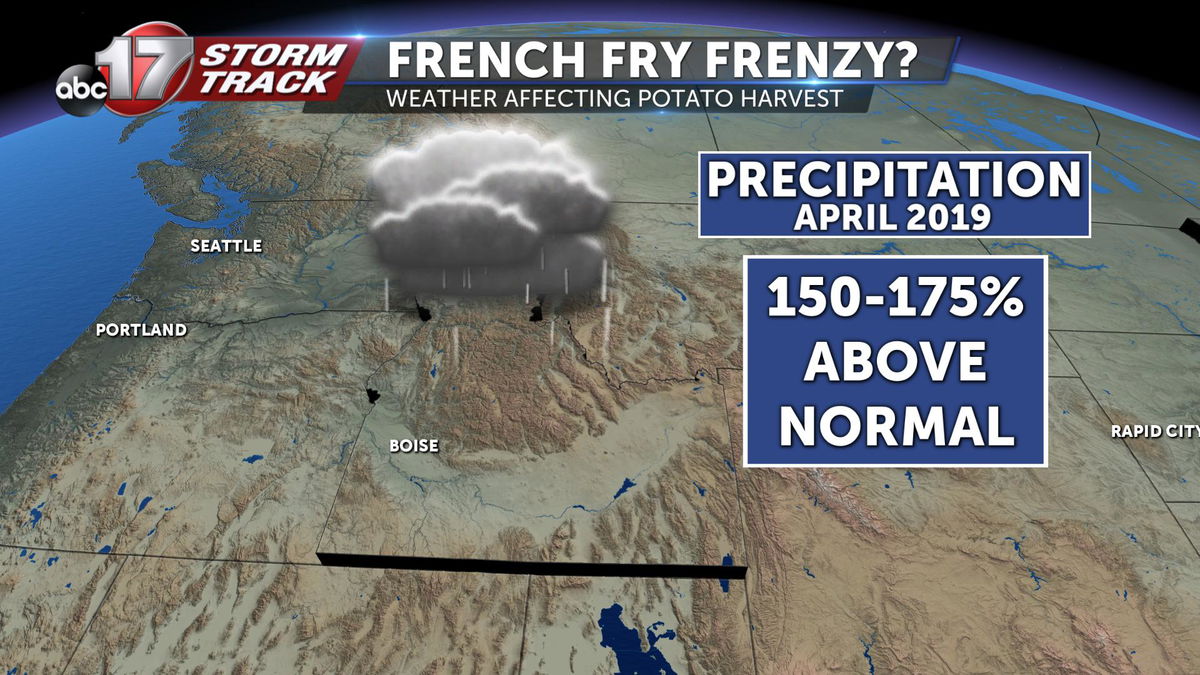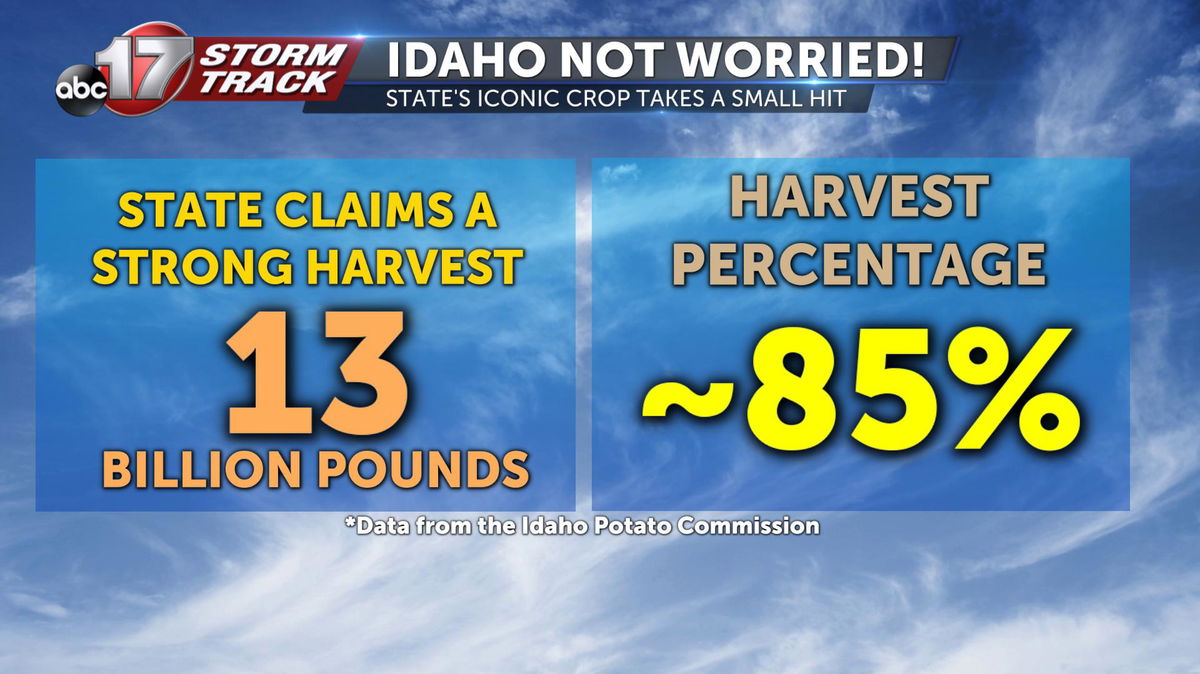How the weather is affecting your plate of french fries
2019 has no doubt been an active year of weather. Everything from bomb cyclones, major hurricanes, tornadoes and flooding have filled headlines all year long.
Effects of these events are often immediate in the form of damage and a clean-up to follow, but other long-term effects are begin uncovered. From report released by the USDA, potato harvests are down 6.1% in 2019 compared to last year, and the lowest they've been since 2010.
The reason? Heavy rainfall and an cooler than average weather which shortened the growing season. The northern plains and western provinces of Canada (particularly North Dakota, Alberta and Manitoba which are major growers of potatoes) saw precipitation values over the spring and summer between 150-200% of normal. This amount of water disturbed the yield collected in late October.

Even Idaho, which produces around 1/3 of potatoes annually had troubles. Above average precipitation in April led to later-than-normal planting. It was followed by an unusual arctic cold snap which threatened the harvest of many potato farms in mid-October.

The Idaho Potato Commission isn't concerned, though. It's estimated that 13 billion pounds of potatoes were collected providing a nearly 85% yield of what was originally planted in the spring.

Officials say you likely won't have to pay more for a fast food fry, however, a smaller mom & pop shop may run prices higher since they don't have the same priority as larger chains.
